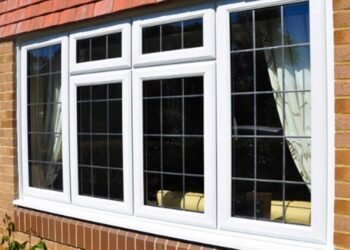Home automation has revolutionized the way we interact with our living spaces, offering convenience, comfort, and increased efficiency. Imagine being able to control your lights, thermostat, security system, and entertainment devices with a simple voice command or a tap on your smartphone. This is the power of home automation, and Seagull Electronics is at the forefront of this exciting field.See more here home automation programming palm beach
Introduction to Home Automation
Home automation refers to the integration of smart technology into various aspects of your home, allowing you to control and automate everyday tasks and functions. With home automation, you can create customized settings and scenarios that enhance your lifestyle, improve energy efficiency, and provide a higher level of security.
Seagull Electronics, a leading company in the home automation industry, specializes in providing comprehensive solutions that cater to the unique needs of homeowners. With their years of experience and expertise, they have earned a reputation for delivering top-notch products and services that make homes smarter and more convenient.
Understanding the Components of a Home Automation System
To get started with home automation, it’s essential to familiarize yourself with the different components that make up a typical system. These components work together to create a seamless and integrated experience:
Smart devices and appliances
Smart devices and appliances are the foundation of any home automation system. These include smart thermostats, lighting systems, door locks, security cameras, and more. These devices are equipped with sensors and can be controlled remotely, allowing you to monitor and adjust various aspects of your home from anywhere.
Control hubs and voice assistants
Control hubs serve as the central command center for your home automation system. They connect and communicate with all your smart devices, enabling you to control them through a single interface. Voice assistants like Amazon Alexa or Google Assistant provide hands-free control by responding to voice commands.
Sensors and detectors
Sensors and detectors play a crucial role in home automation systems. They detect changes in the environment and trigger actions accordingly. For example, motion sensors can turn on lights when someone enters a room, or smoke detectors can alert you in case of a fire.
Communication protocols
Communication protocols are the languages that enable smart devices to communicate with each other and with the control hub. Common protocols include Wi-Fi, Zigbee, Z-Wave, and Bluetooth. It’s important to ensure that the devices you choose are compatible with the communication protocol supported by your control hub.
Choosing the Right Home Automation System
When selecting a home automation system, it’s essential to consider your specific needs and goals. Here are some factors to keep in mind:
Assessing your needs and goals
Think about what aspects of your home you want to automate and the specific functionalities you desire. Do you want to focus on lighting control, security, energy efficiency, or a combination of these? Understanding your needs will help you narrow down your options.
Compatibility and integration
Ensure that the devices you choose are compatible with each other and can be seamlessly integrated into a unified system. Check if they can communicate using the same protocol supported by your control hub.
Scalability and future-proofing
Consider the scalability of the system. Will you be able to add more devices in the future if needed? Also, look for designs that receive regular updates and have the potential to adapt to emerging technologies.
Budget considerations
Set a budget for your home automation project and research products that fall within your price range. Remember to consider the long-term savings in energy costs and the added convenience when assessing the value of the investment.
Setting Up Your Home Automation System
Once you have chosen your home automation system, it’s time to set it up. Follow these steps for a smooth installation process:
Planning the layout
Create a layout plan for your home automation system. Identify the areas where you want to install devices and determine the best locations for optimal functionality.
Connecting devices and hubs
Follow the manufacturer’s instructions to connect your devices and control hub. Most devices can be easily connected using the provided mobile apps or through the control hub’s interface.
Configuring automation rules
Configure automation rules based on your preferences. For example, you can create a rule to automatically turn off lights when no motion is detected in a room for a certain period.
Testing and troubleshooting
Test your home automation system to ensure that all devices are functioning correctly. Troubleshoot any issues that arise, such as connectivity problems or compatibility issues. Seagull Electronics provides reliable support and assistance to help you with any technical difficulties.
Exploring Popular Home Automation Features
Home automation offers a wide range of features that can enhance your daily life. Here are some popular ones to consider:
Lighting control
With home automation, you can control the lighting in your home with ease. Set schedules for lights to turn on or off automatically, create mood lighting scenes, or adjust brightness levels according to your preferences.
Thermostat Automation
Home automation allows you to control your thermostat remotely, ensuring optimal comfort and energy efficiency. Adjust the temperature settings based on your schedule, and let the system learn your preferences to automatically adjust temperatures for maximum comfort.
Security and surveillance
Enhance the security of your home with home automation features such as smart door locks, security cameras, and alarm systems. Monitor your home remotely, receive notifications in case of any security breaches, and have peace of mind knowing that your home is protected.
Entertainment and media
Integrate your entertainment systems into your home automation setup. Control your audio and video devices, stream music or videos to different rooms, and create a seamless entertainment experience throughout your home.
Enhancing Your Home Automation Experience
Take your home automation experience to the next level with these tips:
Voice control and virtual assistants
Utilize voice control by integrating virtual assistants like Amazon Alexa or Google Assistant. Simply give voice commands to control your devices, play music, get weather updates, or answer questions.
Integration with smartphones and wearables
Connect your home automation system to your smartphone or wearable devices for convenient control on the go. Use dedicated mobile apps or wearable interfaces to monitor and adjust settings even when you’re not at home.
Energy efficiency and cost savings
One of the significant benefits of home automation is increased energy efficiency, which leads to cost savings. Monitor and control energy usage, set energy-saving profiles, and receive detailed reports on your energy consumption.
Home automation trends and innovations
Stay updated on the latest trends and innovations in the home automation industry. Explore new technologies such as voice-controlled smart mirrors, automated window treatments, or even automated gardening systems.
Addressing Concerns and Security Considerations
While home automation offers numerous benefits, it’s important to address concerns and ensure the security of your system:
Privacy and data protection
Understand the privacy policies of the devices and systems you choose. Ensure that your data is securely stored and that you have control over what information is collected and shared.
Network security and encryption
Protect your home automation system from unauthorized access by implementing strong network security measures. Use encryption protocols, secure your Wi-Fi network, and regularly update passwords.
Regular updates and maintenance
Stay up to date with software updates for your devices and control hub. Regular updates often include security patches and performance improvements.
Safety measures and backups
Implement safety measures such as surge protectors for your devices. Additionally, back up your system configurations regularly to avoid any data loss in case of system failures.
Troubleshooting Common Home Automation Issues
While home automation systems are designed to be user-friendly, issues may still arise. Here are some common problems and how to troubleshoot them:
Device connectivity problems
If a device is not connecting to your control hub, ensure that it’s within range and that the device and hub are using the same communication protocol. Try restarting the device or resetting its connection.
Software glitches and compatibility issues
Sometimes, software glitches or compatibility issues can cause devices to malfunction. Check for firmware updates or contact customer support for assistance.
Network and signal strength issues
If you’re experiencing connectivity problems, make sure your Wi-Fi network is strong and stable. Consider adding Wi-Fi extenders or upgrading your internet plan if needed.
Consulting professional help
If you’re facing persistent issues or need help with complex installations, consider consulting a professional home automation technician. They can provide expert guidance and ensure a smooth setup.
Conclusion
Home automation is an exciting field that offers endless possibilities to make your home smarter, more convenient, and more energy-efficient. Seagull Electronics, with its expertise in home automation systems, can provide you with the right solutions to transform your living space.
By understanding the components of a home automation system, choosing the right system for your needs, and following the setup and troubleshooting steps, you can embark on a journey to a more connected and automated home.
Explore the benefits of home automation and take advantage of the innovative solutions offered by Seagull Electronics. Transform your home into a smart sanctuary where convenience, comfort, and efficiency are at your fingertips.
FAQs
What is the average cost of a home automation system?
The cost of a home automation system can vary depending on the complexity and features you choose. A basic system can start at a few hundred dollars, while a more comprehensive system with advanced features can range from a few thousand dollars to several tens of thousands.
Can I install a home automation system myself?
Some home automation systems are designed for easy DIY installation, while others may require professional assistance. It depends on the complexity of the system and your comfort level with technology. Seagull Electronics provides guidance and support to help you with installation.
Are there any limitations to what can be automated?
While home automation technology continues to advance, there may be some limitations to what can be automated based on the devices and systems available. However, the possibilities are constantly expanding, and Seagull Electronics can guide you on the best options for your specific needs.
How secure is home automation?
Home automation systems prioritize security and employ various measures to protect your data and devices. However, it’s essential to take precautions such as using strong passwords, keeping your devices and software updated, and implementing network security measures.
What is the warranty period for home automation devices?
The warranty period for home automation devices can vary depending on the manufacturer and the specific product. Typically, warranties range from one to three years. Check the warranty information provided by the manufacturer for details. We are dealers for Control4, Savant, Crestron and RTI.












